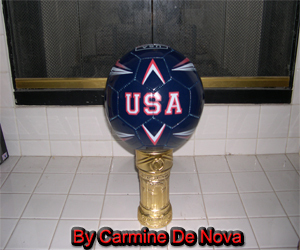Nearly every soccer league around the world features promotion and relegation. Promotion and relegation is simply the best teams in the lower divisions move up and the worst teams go down a division. The only major exceptions are Major League Soccer (US and Canada) and the A-League (Australia and New Zealand) and even the A-League is looking at implementing it in the future. The lone major international holdout is MLS. In this piece, as an American soccer fan, I will offer a possible blueprint to implement promotion and relegation within the near future.
First of all, let me argue why we need promotion and relegation. As a fan, it would provide American soccer more excitement than is frankly the case now. It would give the teams on the bottom of the standings something to fight for, instead of the case currently where there is a perverse incentive to do as worse as possible to get the highest pick in next year’s draft. A pro/rel system would also punish failure and poor management/ownership by placing poorly performing teams in a lower division and costing them money they would earn in television contracts. Finally, it would give teams in smaller markets something to hope for since it would be unlikely they would earn a major league franchise any other way.
What American Pro/Rel Would Look Like:
The following would only take place after a five year grace period where in only the NASL Championship winner would be promoted to MLS and the top two USL Pro teams would be promoted to NASL. There would be no relegation and MLS would keep all of its current rules.
A 24 team 1st division (MLS) divided into Eastern and Western conferences of 12 team apiece. That is up from the current 19 teams that are currently in MLS. Each team would play its conference opponents twice and every other team once for a total of 34 games. MLS Cup Playoff format would remain unchanged, but the worst team in each conference would be relegated to the NASL and the second worst team would play in a home and away relegation playoff against the second best NASL team in its conference.
A 12 team 2nd division (NASL) and 3rd division (USL Pro) divided into Eastern and Western conferences of 6 teams apiece. Each team would play its conference opponents 3 times and all other teams once for a total of 21 games. Both leagues should eventually expand to 24 teams and follow the MLS format. NASL currently has 8 teams and the USL Pro currently has 11 teams. The pro/rel format would also follow the above MLS example.
The Role of the US Soccer Federation:
US Soccer, along with the participating foreign federations, would begin the process of setting up minimum standards of professionalism that current and new professional clubs would have to adhere to. These will include capital requirements for the ownership groups, minimum stadium seating requirements, financial fair play rules based on the ones adopted by UEFA, and a minimum wage for players. Teams that meet these requirements will be given professional licenses that can only be revoked by consistent poor performance and/or club bankruptcy. Any new clubs would start out in the USL Pro and have to work their way up and the new professional rules would be enforced immediately in the USL Pro and NASL.
Making US soccer more competitive will only increase its quality of play. Plus, it would provide more exciting soccer for American fans to help grow the game domestically and increase exposure and profits for all soccer clubs, especially the lower level divisions. Finally, FIFA considers pro/rel, “the essence of the game” and many commentators see the lack of pro/rel as a reason why the US bid to host the World Cup in 2022 failed. Instituting pro/rel and a more professional system in the US would give the US game more respectability around the world.
Kevin Boyd is a lifelong soccer fan whose passion for the beautiful game was reignited during the 2010 World Cup and has burned bright ever since.


